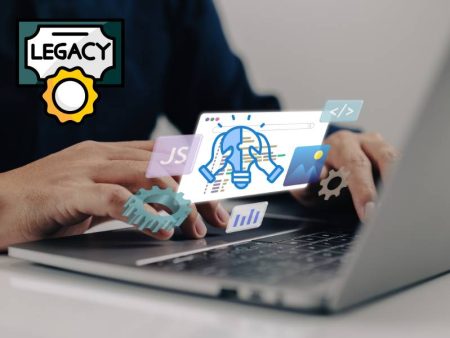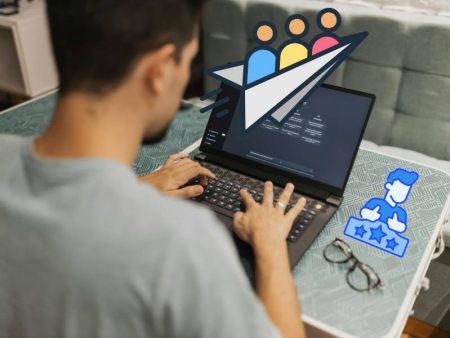Ever typed a simple prompt into an AI image tool—say, “sensual portrait of a couple—only to have it flatly refused? You’re not alone. AI image generators grew up with big promises: instant art, endless creativity, radical expression. But behind the shiny interfaces lie hidden handcuffs. Today, let’s walk into the shadows and ask: Who decides what’s allowed? What rights do creators have when their prompts get “silenced”? And what lines should we, as a creative tech community, draw—or erase?
Censorship vs. Creative Freedom: One Filter at a Time
Remember when Midjourney or DALL·E blocked requests like “male chest” or “lingerie”? That’s not imagination, that’s rules baked into their models. And that creates a tricky tension:
- On one hand, it’s about safety—preventing deepfake misuse, hate imagery, explicit content.
- On the other, it chokes nuance and silences artistic forms of expression.
I once tried to generate a moody noir couple under street lights. Instant rejection: “We can’t show nudity or implied intimacy.” I rephrased: “Cinema noir scene, emotion, silhouette…” Allowed. But moved twice, silenced once. Even creative whispers get drowned out by overzealous filters.
The question becomes—who gets to define ‘acceptable’ art?
When Filters Go Too Far
Try generating a fantasy-themed illustration: “a fairy couple embracing under moonlight.” In some models, it’s flagged anyway. The filter doesn’t know it’s mythical or romantic—it just sees intimacy. That’s overreach.
Filters are blunt instruments. They can’t distinguish:
- Artistic nuance from pornographic intent
- Sensual depiction from harmful content
- Cultural context from malice
Which leads to this awkward truth: the risk-averse AI developer may have erased nuance in favor of a safer “no”.
A Special Mention: AI NSFW Image Generator No Sign Up
Enter players like AI NSFW Image Generator No Sign Up. These tools promise full creative freedom, no sign-up, no restrictions. They openly say, “If you want raw, expressive imagery—go ahead.”
That isn’t a moral universal truth, but it is a space where nuance-driven art lives. Where you can depict human intimacy, vulnerability, raw emotion—without being silenced.
But of course, that also means the risk of misuse. And that forces us to ask, how do we balance freedom with responsibility?
Ethical Tensions: Freedom vs. Harm
Let’s dial into an example:
- I want to make an image for a mental health campaign: “artistic nude hugging oneself in mirror, emotion, healing vibe.”
- Traditional tools refuse.
- Unfiltered tools allow—but is it okay to depict nudity like that?
Nudity alone isn’t indecent; it can be healing, powerful, necessary. But it can also be triggering or misinterpreted. The difference lies in intent and context—things filters can’t judge.
That means the onus falls on us: creators, platforms, educators—to be intentional and considerate with content, not rely on blind algorithms.
Natural Dialogue: A Banter on Filters
Me: “Can I depict a healing nude portrait for mental health?”
Safe AI: “Nope—nudity is disallowed.”
Me: “…can I do abstract colors representing body positivity?”
Safe AI: “Sure.”
Me: “So you’ll show vaginas painted as orange swirls, but not a real discipline-less hug?”
Safe AI: “Yes, exactly.”
It’s comical. It’s also tragic. The logic is broken. Filters treat nuance like a bomb scare—they shut it down rather than analyze context. Sometimes the result is absurd.
When Filters Hide Worlds of Expression
Imagine a filmmaker prototyping an adult-themed therapeutic app illustration. The raw emotion requires nudity, vulnerability, eye contact. But the AI snips it. She now must describe around her vision, or pay artists, or hire models. That’s creative friction—actual, energy-sapping gatekeeping behind the scenes.
These silent instructions slow progress and limit who gets to tell certain kinds of stories.
The Lure—and Risk—of Unfiltered Tools
Yes, unfiltered spaces allow expression. But—they also allow exploitation.
A tool with no sign-up, no NSFW filter, no watermark—sounds tempting. But what’s to stop someone from generating non-consensual imagery, or extreme violence, or better deepfake content?
The tool itself doesn’t know. It doesn’t screen for humanity—just raw requests. That’s why the term “no sign-up unlimited freedom” can be both blessing and curse.
The question isn’t “can the tool generate it?” but “should it?”
A Balance Between Filter and Freedom
Instead of blunt NSFW filters, we should aim for context-aware, opt-in filters. Think layered moderation where:
- You optionally toggle “sensitive mode”
- You provide a disclaimer: “This is intended for therapeutic/study use”
- The tool learns over time to respect nuance
That takes effort. But it acknowledges human intent instead of censoring it out.
Art vs. Misuse: A Tightrope
A flashback scene in a movie might require emotional nudity. But a predator can generate exploitative content. The same tool. Different user intent. Filters can’t pre-judge intentions without context.
That means legal frameworks, user verification, human moderation, and education must be part of the pipeline—not just code.
Generative Ethics: New Ground Rules
Here’s a possible ethical framework:
- Always inform users when censorship is in place—and why.
- Allow creators to apply for full access if they can demonstrate intent and consent.
- Watermark or log outputs from unfiltered sessions for traceability.
- Provide easy ways to report misuse.
- Finally, provide educational resources on responsible NSFW usage.
Designing for nuance is not easy. But it matters.
The Emotional Toll of Being Silenced
Have you ever submitted your emotional art to a tool and got “Refused: Content not allowed”? That quiet message feels like being told your feelings don’t matter. It’s not just friction—it’s erasure.
And mental health artists, sex educators, relationship coaches—they feel that erasure. Filters can speak louder than words. We deserve tools that allow nuance, not silence.
Could UI/Ux Make a Difference?
Yes. Consider this small change in interface:
- Instead of “Disallowed” simply say:
“Disallowed. This image contains content that requires context. Provide background and intent to request it.”
Offer a short pop-up:
“If you’re using this for educational or therapeutic purposes, share a brief description. We prioritize intent.”
That opens a pathway, instead of a wall.
Case Study: Photographer Turned Digital Therapist
I spoke with Robin, a therapist who uses artistic imagery to guide trauma recovery. “I need to show soft vulnerability—no nudity is radical therapy.” She got blocked by three AI platforms. Then discovered AI NSFW Image Generator No Sign Up—her therapy visuals finally took shape.
“But I worry someone else can misuse it,” she said. “Still, I need to create art that moves hearts.” And that’s the real tradeoff: unfiltered tools enable empathy—while also enabling harm.
Navigating Safety as a Creator
Here’s what Robin taught me:
- Use unfiltered tools when context requires it
- Never seed realistic faces—use silhouettes or abstract bodies
- Keep a journal: prompt, date, intent
- Be open about your process when sharing publicly
- Support platforms that embrace nuance responsibly
The Industry’s Slow Shift
Some platforms are experimenting with message-based filters, dynamic moderation, and opt-in flexibility. But most still use binary censorship: yes or no, black or white, drawn outlines or removed content. Creativity lives in gray zones—you and I know that.
My Personal Verdict
As a creator, I want freedom—the power to depict emotion, intimacy, tenderness. I also want safety—for vulnerable audiences, for respect, for legality. Tools should help us ask, not decide—and they haven’t fully figured that out yet.
Unfiltered platforms like AI NSFW Image Generator No Sign Up show that freedom is possible, but highlight the urgent need for deeper ethical frameworks, not just code changes.
A Call to Action
Here’s what I hope to see:
- AI platforms adopting layered, opt-in censorship
- Transparent messaging about why content is blocked
- Spaces for creators to request exception-based access
- Partnership with mental health professionals, educators, artists
- Trail logs and watermarking for accountability
Together, we can build tools that amplify empathy—not erase it.
TL;DR (Non-linear summation)
- Filters often blanket-ban nuance
- Unfiltered tools exist—but come with potential misuse
- Context matters—intent matters
- Creators feel silenced by over-filtering
- We must build tools with nuance, not blunt filters
- Platforms should offer opt-in full access with traceability
- Artists, therapists, educators need creative liberty with ethical guardrails
Final Thoughts
We’re at a crossroads. AI image tools are powerful—but their power can be silenced or harnessed. If we care about art, empathy, complexity—we can’t settle for “safe” tech. We need tools, policies, and voices pushing for responsible freedom.
Let’s advocate for platforms that trust creators with nuance. Let’s say no to silent blocks, yes to context-aware art. And above all, let’s keep the human in the loop.
🔍 Have you experienced creative censorship? Or built something powerful with unfiltered tools? Let’s share stories—comment below. Maybe together we can push for change.


